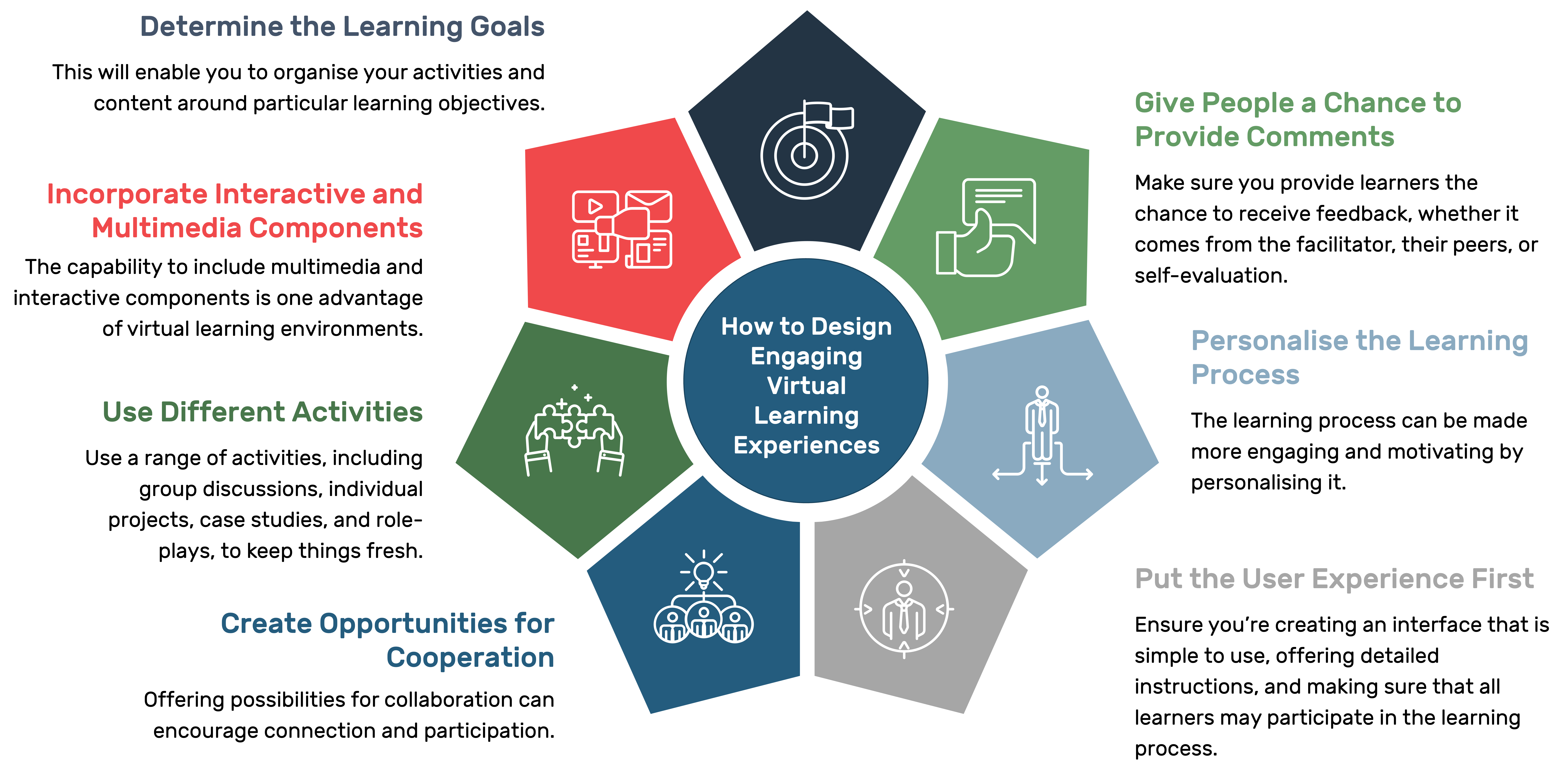How to Design Engaging Virtual Learning Experiences
Many educational institutions and organisations have changed their focus to virtual learning opportunities as a result of the ongoing pandemic. Whilst it can be challenging to create engaging virtual learning experiences, it is possible. We’ll look at some ideas for creating interesting virtual learning environments in this article.
Determine the Learning Goals
Setting up specific learning objectives is the first step in creating an engaging virtual learning environment. This will enable you to organise your activities and content around particular learning objectives. Make careful to make your goals measurable and aligned with the needs of your learners.
Incorporate Interactive and Multimedia Components
The capability to include multimedia and interactive components is one advantage of virtual learning environments. Videos, animations, games, tests, and simulations are some examples.
Use Different Activities
Virtual learning experiences can be boring if they only include one kind of action. Use a range of activities, including group discussions, individual projects, case studies, and role-plays, to keep things fresh. This will keep learners interested and support various learning styles.
Create Opportunities for Cooperation
Because virtual learning environments can frequently feel solitary, offering possibilities for collaboration can encourage connection and participation. This might involve team brainstorming meetings, breakout spaces, or group projects.
Give People a Chance to Provide Comments
Feedback is essential for learners to know how they are tracking in relation to their learning goals. Make sure you provide learners the chance to receive feedback, whether it comes from the facilitator, their peers, or self-evaluation. This will keep learners interested in their training and inspired to keep learning.
Personalise the Learning Process
The learning process can be made more engaging and motivating by personalising it. This can involve giving learners the chance to select their own learning route or providing them with individualised feedback and support.
Put the User Experience First
The user experience should be taken into consideration when designing virtual learning experiences. This entails creating an interface that is simple to use, offering detailed instructions, and making sure that all learners may participate in the learning process.
Conclusion
Planning and thought must go into creating interesting virtual learning sessions. You can design engaging and effective virtual learning experiences by defining learning objectives, including multimedia and interactive elements, using a variety of activities, offering opportunities for collaboration and feedback, personalising the learning experience, and paying attention to user experience.
References:
Ally, M. (Ed.). (2009). Mobile learning: Transforming the delivery of education and training. Athabasca University Press.
Barrett, B., & Lally, V. (2012). Online learning: A user-friendly approach for high school and college learners. Rowman & Littlefield.
Chen, S. C., & Macredie, R. D. (2004). Cognitive overload, self‐efficacy, and learner satisfactions in web‐based continuing learning. Computers in Human Behavior, 20(5), 551-568.
Dabbagh, N., & Kitsantas, A. (2012). Personal learning environments, social media, and self-regulated learning: A natural formula for connecting formal and informal learning. The Internet and Higher Education, 15(1), 3-8.
Palloff, R. M., & Pratt, K. (2003). The virtual learner: A profile and guide to working with online learners. John Wiley & Sons.

